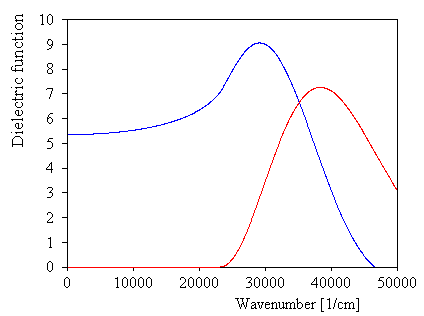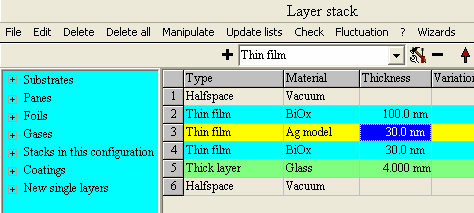The disturbance of the transmittance in the visible due to the presence of the Ag layer can be reduced by adding dielectric layers underneath and on top of the metal film. In this example we use BiOx which is discussed on our homepage www.mtheiss.com as an example for the application of the OJL interband transition model.
Open the list of materials and create a new object of type 'Dielectric function model'. Open it and load with the local menu command File|Open the file biox.dfm. It should look like this:

Note that this material has in the visible range (12000 ... 25000 1/cm) a low imaginary part (small absorption) and a real part significantly larger than that of glass.
Add two more layers of type 'Thin film' in the layer stack (above and underneath the Ag layer) and fill them with the new oxide. Set the thickness of both layers to 30 nm. The layer stack should now be this:

The spectra in the visible are much improved:

Fortunately, the addition of the oxide layers has not changed the emission in the infrared which is still low. In the next section, a more systematic and quantitative evaluation of the coating properties is done.
The program configuration obtained up to now is saved as tu1_ex1_step4.wcd in the data folder of this tutorial.